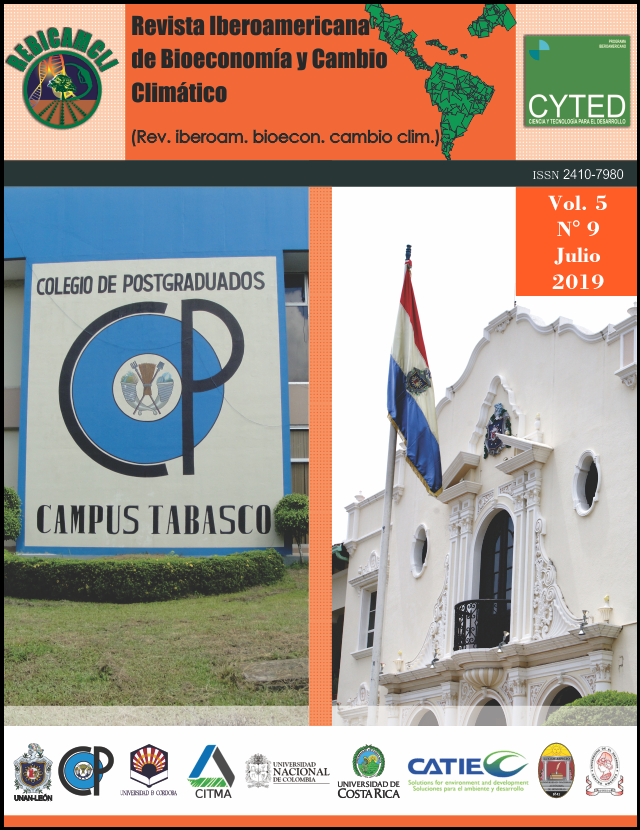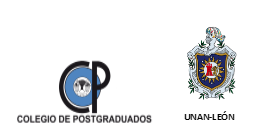Floristic characterization of the species of apicultural use in the volcanic complex "Pilas el Hoyo"
DOI:
https://doi.org/10.5377/ribcc.v5i9.7952Keywords:
Honey species, Apiary, Bignoniáceae; Plantaginacea, ConvolvulaceaAbstract
The study was carried out in the protected area "Volcanic Complex Cerro Negro - Pilas - El Hoyo", located at 25 km east of the city of León. The objective of this study was to characterize the honey species in the area. Through this research, beekeepers will have greater knowledge about honey species and their availability during the year. Seven active apiaries distributed between the community of Miramar and the district of Terreros were chosen, where 4 weekly samplings per apiary were carried out using transects of 20m x 50m, taking as starting point the apiaries to identify and count the number of species of beekeeping. The data obtained were exported to Excel. We identified 89 species belonging to 39 families, divided into: 59 tree species, 15 shrub species and 15 herbal species. The families with greater abundance in trees were the Bignoniáceae, Myrtaceae, Fabácea, Ebenaceae and Boraginaceae; in shrubs are Verbenaceae, Boraginaceae, Fabaceae, Apocynaceae and Solanaceae; in herbs are Plantaginacea, Malvaceae, Sterculiaceae, Lamiaceae and Convolvulacea. The use of the land in the apiaries shows 53% of wild forest, 12% of fallow, 8% of peanuts, 12% between corn and sorghum, 9% between eucalyptus, white beans and cassava, 4% between paddocks and cane, 2% between pasture and sesame. There is a greater flowering between the months of December to May. From June to November there is a shortage of flowering, this phenomenon is to compensate with species of prolonged flowering and crops.
Downloads
831
HTML (Español (España)) 0
Additional Files
Published
How to Cite
Issue
Section
License
Copyright © Rev. iberoam. bioecon. climate change (Graduate School and UNAN-León, School of Agricultural and Veterinary Sciences / Department of Agroecology / Center for Research in Bioeconomy and Climate Cahnge (CRByCC).








